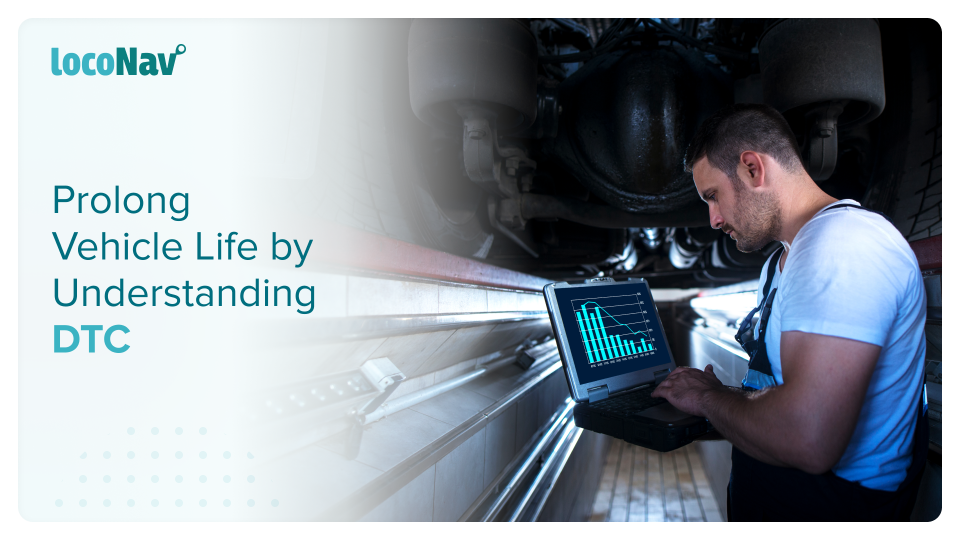

Most drivers are acquainted with the dashboard lights and indicators, particularly the awful check engine light. Did you realise, however, that these lights are the base-level signals for a complex system of diagnostic signals that continue working to monitor a vehicle’s health?
From tiny automobiles to huge trucks, having a system capable of identifying minor flaws or malfunctions before they occur or occur can save the drivers’ lives. This system is well-known as onboard diagnostics (OBD).
Your vehicle’s onboard diagnostic (computer system transmits any malfunctions to you via DTCs (Diagnostic Trouble Codes). These are codes that the onboard computer diagnostic system stores. These codes signal an issue with the vehicle and are read by installing a code reader or scanner to the OBD-II port on the vehicle. They are essential for everybody who owns a vehicle, but especially so if you handle commercial vehicles.
In this blog, we will help you decode the connection between OBD systems and the DTC they generate and how they can help you get a hang of your vehicle maintenance activities.
Manage your fleet efficiently with LocoNav’s Fleet Management Solutions!
What is the Link Between DTC and OBD Systems?
When a defect is discovered, the vehicle’s OBD system generates diagnostic trouble codes. The OBD both detects and shows the DTC via visual alerts such as the lighting of a check engine light. It is also what permits external equipment, such as an OBD scanner, to communicate with the onboard computer system of a car.
Segments of Diagnostic Trouble Codes
In general, a diagnostic trouble code is divided into 4 parts: one letter and four numbers. It usually consists of five characters.
- The first letter of the code represents the DTC’s system or category. It identifies the relevant system.
Type of DTC Systems:
- P Code: This category includes functions such as gearbox, engine, and drivetrain accessories.
- C Code: relates to areas outside of the passenger compartment It includes features such as brakes, suspensions, steering, and mechanical systems.
- U Code: refers to network and vehicle integration, as well as operations controlled by the onboard computer system.
- B Code: This category includes parts located mostly in the passenger compartment and is focused on driver-related activities such as safety and convenience.
- The second number in the DTC denotes a generic or manufacturer-specific code. In general, DTCs will begin with either a 0 or a 1.
- Codes beginning with 0 represent generic defects. It is a general code that is used by all OBD-II automobiles.
- Codes beginning with 1 are OEM-specific codes. These numbers are particular to the model of the car.
- The third character in the DTC denotes the subsystem where the fault is located.
There are eight subsystems in the powertrain category (P):
- 0 – Metering of fuel and air, as well as auxiliary emission controls
- 1 – Metering of fuel and air
- 2 – Metering of fuel and air-injector circuit
- 3 – Ignition systems
- 4 – Controls for auxiliary emissions
- 5 – Vehicle speed control and idling of the engine
- 6 – Computer and extraneous outputs
- 7 – Transmission
- The last two (or three) numbers in the DTC pertain to the actual defect description. It might be any number from 0 to 99.
Let us consider an example of a DTC, P0430.
P – indicates an issue with the gearbox, engine, and drivetrain accessories.
0 – generic code
4 – represents an issue with auxiliary emission control
30 – indicates that the catalyst system’s efficiency is less than the threshold
How Can Understanding DTC Aid Vehicle Maintenance?
When you understand DTC codes, you can stay one step ahead of your vehicle maintenance efforts. DTC warnings provide fleet managers with a quick snapshot of their vehicles’ health. Drivers have hitherto been relied on to relay these signals to their management, raising the possibility of vehicle faults going unnoticed.
When a vehicle’s onboard diagnostics system detects a problem, DTCs are created. These DTCs are subsequently shown on the vehicle’s instrument panel via a warning light or similar indicator.
This integration can deliver instant business value to fleet management by
- Maintenance and scheduling
- Accident prevention via warnings such as impending brake failures
- Monitoring current vehicle issues
Identify DTC Codes Easily With Telematics
The telematics device in a vehicle can interpret and transmit DTC codes from the vehicle’s diagnostic port to the fleet management platform. The best fleet management systems interpret the codes into simple English, allowing managers to understand the type and severity of the defect before the vehicle is serviced.
Managers may set notifications for specific vehicle groupings or all fleet vehicles. These notifications, which include the DTC number and a description, can be sent to numerous recipients.
When a dispatcher or maintenance manager receives a DTC warning, they can decide whether to instruct the operator to pull over, proceed to a service station, or complete the route in real-time.
In the event of an emergency, such as an overheating engine or a low battery, the dispatcher can contact the driver and reroute them to the nearest service station, using the position information in the alert to dispatch another vehicle.
FAQ
What to do if DTC codes are displayed?
Once you see a DTC code displayed, you should ideally decode it and carry out repair mechanisms.
What are the common DTC codes?
The following is a list of frequent DTCs and their associated malfunctions.
- P0442: A minor system leak in the evaporative emission control system of a vehicle.
- P0606: A power train control module (PCM), also known as the engine control module, malfunctions (ECM).
- P0101: A problem with the mass air flow (MAF) sensor or the circuit.
- P0110: A problem with the intake air temperature sensing circuit.
- P0500: A speed control sensor failure.
- P0706: Transmission range sensor circuit range fault.
How long can I ignore the check engine light?
If the check engine light flashes, this is one dashboard light you should not disregard. Ignoring the check engine light for a week, a month, or a year endangers your vehicle and, by extension, your personal safety.
Why is it necessary to clear DTC codes after repair?
Failure to clear a code after a fix may cause you to second-guess the problem or double your work to verify the codes.
